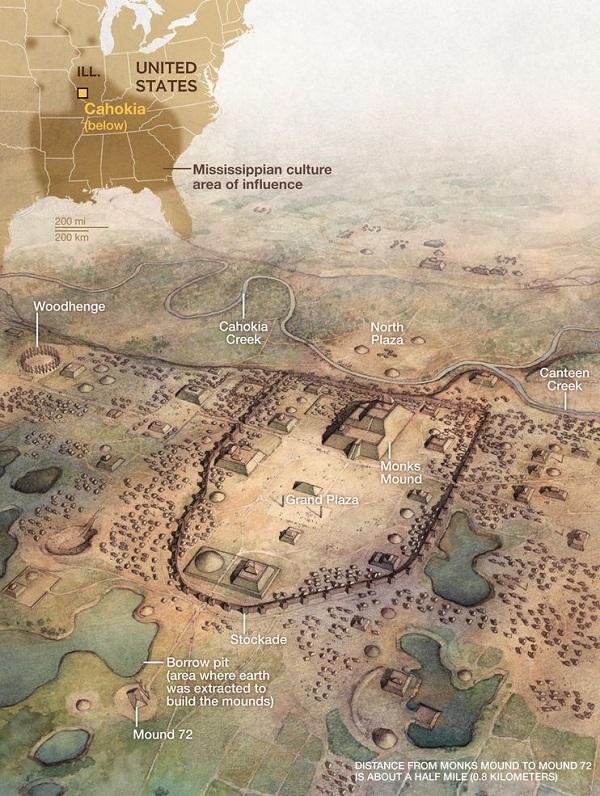
© John Kelly, Washington University in St. Louis
Apparently there were cities in the Americas before European influence ever set foot on the continent.
A thousand years ago, where modern-day St. Louis stands, existed a Native American city known as
Cahookia. Its birth and decline is one of America's great mysteries.
A new studied published in the
Journal of Archeological Science sheds new information on the ancient city where they believe about 20,000 people lived, and was formed in just 50 years.
How did they come up with this discovery? By examining the strontium content of teeth from the remnants of 87 ancient Cahookians and checking the similarities and differences between those and strontium signatures of local fauna, concluded a team lead by Thomas Emerson of the University of Illinois at Urbana-Champaign.
"Teeth retain the isotopic signature of an individual's diet at various periods of life depending on the tooth type sampled, ranging from in utero to approximately 16 years of age," the study continued.
"Archaeologists are realizing that Cahokia at AD 1100 was very likely an urban center with as many as 20,000 inhabitants," Emerson said in a news release. "Such early centers around the world grow by immigration, not by birthrate."
Emerson and his team carried out the analysis of the teeth and found one-third of the population of the city through its history, which lasted from approximately AD 1050 through the early 1300s.
"This indicates that Cahokia as a political, social and religious center was extremely fluid and dynamic, with a constantly fluctuating composition," Emerson said. "Cahokia, because it was multiethnic and perhaps even multilingual, must have been a virtual 'melting pot' that fostered new ways of living, new political and social patterns and perhaps even new religious beliefs," he said.
Emerson and his team started their studies on the ancient city in 2009 and continue to expand their database.
Maybe for these researchers, but most have known about it for quite some time. These 'wise' guys remind me of the reports on how Chris Columbus 'discovered' 'America'... funny, but it makes about as much sense as anything else covered by the media these days. Next they'll be telling us they discovered water is wet! Imagine that... or the earth is round! Preposterous! Unfathomable! It simply cannot be!